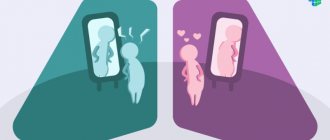What sleep is in our everyday life is probably not worth telling. Some people get enough sleep, some don’t, but one way or another, every person who is tired during the day dreams of a soft pillow. From a medical point of view, sleep is our adaptation, a state that, through certain neurophysiological, chemical, psychological changes, gives us the opportunity to be physically, mentally and emotionally functional the next day. Sleep is a clear sequential process of changing phases, stages of electrical activity of the brain. The stages of sleep are largely determined by the set of our genes and, interestingly, not all animals are endowed with the ability to sleep in the sense in which we are accustomed to perceiving sleep.
First things first
Complete, true sleep with phases and stages is characteristic only of the most developed warm-blooded animals: mammals (which include humans) and birds. The variety of phases and stages, their duration and depth in different animals is amazing. Some people sleep a few minutes a day, with changes in sleep stages occurring within seconds, as, for example, in the case of a giraffe. And in some species of bats, sleep can last up to 20 hours.
The separation of phases began relatively recently. The science of somnology itself began to take shape just over 80 years ago. Alfred Lee Loomis first described the stages of sleep in the mid-30s of the last century, then in 1953 scientists Dement and Kleitman identified the phase of rapid eye movements, and in 1968 all knowledge was combined by Rechtschaffen into one atlas, which was used by all sleep doctors until 2007, when numerous changes occurred. New methods of examining patients were developed. A path has been passed from the application of several electrodes (electroencephalography) with recording of signals in ink on paper to complex computer systems that, in addition to the electrical activity of the brain, make it possible to simultaneously evaluate many parameters of our body.
How to make waking up in the morning easy?
If you are a “morning person”, then you can easily skip this paragraph of the article and continue studying the question “how much sleep per day” from the next one. After all, you do not experience the torment of a prolonged awakening, and the question is not relevant. There are also "pigeons". For such people, getting up early is also not something super unpleasant. But for people who belong to the “night owl” category, this is really very difficult. If you see yourself as one of these “morning sufferers”, the following tips will help you:
1) under no circumstances put off getting up in the morning “at least for another 5 minutes”, but get out of bed as soon as the first alarm sounds;
Photo from source: beesona.ru
2) do not go to bed very late, or after you have eaten heavily;
Photo from source: 1gai.ru
3) when waking up, turn on music that invigorates you and as much light as possible;
Photo from source: 101hairtips.com
4) do a little gymnastics to rhythmic melodies - so that it is pleasant and not too burdensome;
Photo from source: folkextreme.ru
5) drink a glass of water;
Photo from source: zdorovieinform.ru
6) it is better to wash your face with cool water, and as an “advanced level” - a contrast shower;
Photo from source: vsedavlenie.ru
7) breakfast should be hearty - this will help the body recharge itself with energy.
Photo from source: profile.ru
Getting up early is great, but the main thing is to get enough sleep. Having found the correct answer to the question of how much sleep an adult needs, you will be convinced that sleep is the best cosmetologist. It helps remove traces of daytime fatigue from the face, smooth out wrinkles, allows muscles to rest, and replenishes energy.
Human sleep phases
Human sleep can be divided into several stages. The first stage (it can also be called relaxed wakefulness) is shallow sleep. During this period, we are not yet sleeping, but the breathing rate and pulse decrease, and the level of blood pressure and muscle tone also gradually decreases.
The second stage of sleep is a deeper sleep (medium depth), during which a decrease in blood pressure, pulse, and breathing rate continues and further muscle relaxation occurs. At this moment, we stop reacting to minor external stimuli, to the usual noise outside the window or in the apartment. During this phase, twitching of the arms and legs may occur, sometimes involving the entire body, the so-called sleepy twitches (myoclonus).
The third stage (which has now been decided to be combined with the fourth) is called deep sleep, or delta sleep. It is determined by the presence of delta waves detected on the electroencephalogram. This electrical activity in the brain is like slow waves of the sea, gradually rolling onto the shore of our consciousness and plunging us into a world of dreams. The muscles of the body are relaxed, breathing is calm and rare, the heart beats calmly, and even strong, to a certain extent, external stimuli cannot wake us up.
You can also distinguish a phase of sleep called the rapid eye movement phase. As the name suggests, this phase produces eye movements that can be seen in all of us, even through closed eyelids. This dream can hardly be called calm: blood pressure fluctuates, heart rate constantly changes, the electrical activity of the brain is “chaotic”, we see dreams. If a person is awakened during this phase, then most likely he will be able to tell his dream. During the deep sleep stage, we also see dreams, but almost no one manages to remember them.
The stages of sleep and rapid eye movement are combined into a cycle that lasts from 60 to 100 minutes. During the night, 4-6 cycles change, although this parameter directly depends on the duration of our sleep. In the first half of the night, slow-wave sleep predominates, in the second half - rapid eye movement sleep. In the structure of night sleep, stage 1 should occupy about 5%, stage 2 – 50%, stage 3 – 15-20%, rapid eye movement sleep – 20-25%. And about 5-15% of the time allotted for sleep, we are awake.
⭐️ The main thing for us
- During sleep, the body repairs and regulates itself. Death from lack of sleep is actually not from lack of sleep, but because no one has repaired the organs for a long time.
- Regular bedtimes and wake-up times are more important than going to bed and waking up early. If possible, go to bed and get up at the same time.
- You need to sleep in a cool, dark room on a good mattress. Quiet games before bed.
- There is a phase of deep sleep: it is in this phase that the brain engages in restoration of itself and the body. If you awaken a person in this phase, he will be inhibited.
- There is a phase of paradoxical sleep: in it the brain experiences important impressions, remembers what is necessary and forgets what is unnecessary. If you awaken a person here, he will remember his dream.
- Together these two phases last about an hour and a half. Therefore, healthy sleep is a multiple of one and a half hours: 6, 7.5 or 9 hours. Give or take half an hour.
- You need to sleep during the day for either 20 minutes or an hour and a half. If you sleep for an hour, there is a high chance that you will wake up in the middle of a deep phase and be stupid for an hour.
- Night owls and early birds exist, but they are not what they seem.
Now in more detail.
Sleep functions
Why one or another stage of sleep is needed can be answered even without medical education: for physical and emotional rest and recuperation. In general, this is true. During deep sleep, important processes occur: the accumulation of necessary substances for the full functioning of the body, the synthesis of amino acids, regeneration processes, and the synthesis of somatotropic hormone (growth hormone). The function of the stage with rapid eye movements is psychological adaptation, ordering, analysis of information received during the day, formation of a program for future behavior, formulation of a response to received challenges.
Why does a child sleep restlessly
A peculiarity of a baby’s sleep in the first month of life is that after falling asleep, the baby immediately goes into the slow phase. At what age do children dream is still a controversial topic; babies begin dreaming immediately after falling asleep. During such sleep, the child’s brain works faster, sometimes even stronger than when awake, and is accompanied by increased activity - movements of the legs and arms are noted, which can alert parents.
To create a comfortable system for sleep and rest for a child in the first month of life, it is necessary to create silence, preventing street noise from entering the room, turn off or mute the sound of a working TV; remove bright room lighting, it is advisable to close the windows with thick curtains to exclude access to bright sunlight; at night it is permissible to use a dim night light.
Sleep study
Identification of all of the above features of the sleep-wake cycle, phases and stages became possible by recording the electrical activity of the brain. Electroencephalography (EEG) has been used for this purpose for many decades.
Recording of the electrical activity of the brain is carried out using modern equipment simultaneously with recording signals from the muscles of the face (myogram), arms, legs, eye movements (oculogram), pulse, blood oxygen saturation (saturation), respiratory rate, vibrations of the chest and abdominal wall, blood pressure . A video recording of the patient is also carried out at the same time. This study is called polysomnography (PSG). The study is carried out overnight, often in a special ward. Using a larger number of sensors (leads), it is possible to more reliably identify sleep stages and diagnose a greater number of sleep-related pathologies.
Often, a study to determine a specific pathology is carried out without video recording and with a certain (not all) set of leads. In this case, we can talk about printing, which can be easily done at home (outpatient).
Another way to study sleep is actography (or actigraphy). The essence of the method is similar to what a modern smartphone with the appropriate application can do: mark the moments of awakening, turns in bed, episodes of a calm state. One or another research method is chosen individually in each case to reduce time and material costs while maintaining the greatest information content. For example, to detect apnea (holding of breath during sleep), several sensors will be sufficient to determine respiration, pulse and blood oxygen saturation. On the contrary, to make a diagnosis of restless legs syndrome or if sleep epilepsy is suspected, the need to record data from the arms and legs, EEG and use of video recording is obvious.
Quality sleep: what is it like?
In 2022, the US National Sleep Foundation formulated recommendations for sleep quality. They concerned indicators that characterize the continuity of night rest, its structure, as well as the presence of episodes of daytime sleep. We present some standards in table form.
| Index | Norm | Suitable for persons over 65 years of age | Not the norm for people under 65 |
| Sleep continuity | |||
| Sleep latency (speed of falling asleep) | ≤15 minutes | 31-60 minutes | 45-60 minutes |
| Awakenings lasting more than 5 minutes | Up to 2 times per night | Up to 3 times | ≥4 times |
| Time awake after sleep onset | ≤20 minutes | 31-60 minutes or more | ≥41 minutes (≥51 minutes for teenagers) |
| Daytime nap | |||
| Number of episodes per day | 0 (up to 1 for teenagers) | 0-3 | ≥4 |
| Duration | ≤20 minutes for adolescents; not defined for other groups | ≤100 minutes | >100-120 minutes |
But even this numerous list is not able to cover all the important parameters necessary for analyzing the quality of a night's rest.
Sleep disorders
Speaking about sleep disorders, you can make a list of several dozen names of pathologies, conditions, and syndromes. I am sure that almost every one of us has experienced insomnia at least once in our lives or woke up early in the morning when we could still sleep, and could no longer fall asleep until the annoying alarm clock sounded. Some of us were periodically bothered by daytime sleepiness and fatigue during the day, although it seemed that we slept enough. Some will remember sleepwalking (somnambulism), which, by the way, occurs during slow, that is, deep sleep, which is associated with the absence in the morning of such patients of any memories of night walks. In the same phase, nightmares appear. Maybe someone was awakened by the sounds of the booming snoring of a spouse sleeping next to them, or, what’s more, a spouse, interrupted by episodes of silence and lack of breathing for several seconds. It is also necessary to remember about the change in time zones and how difficult it can be to fall asleep after a flight, for example, to Vladivostok, the USA, Australia, or sometimes even to London and Magnitogorsk. Restless legs syndrome, bedwetting, increased sleepiness, disturbances caused by shift work schedules, teeth grinding in sleep, various epileptic syndromes. The list goes on and on. Moreover, each condition has many causes. Insomnia can be caused by taking certain medications, drinking caffeinated drinks or alcohol, emotional stress, anxiety, depression, and spinal pain. Snoring can simply be an unpleasant sound phenomenon associated with the structural features of the respiratory tract or accompany sleep apnea, which transfers this condition from the category of irritating to life-threatening.
It is important to understand that poor sleep, and even more so sleep pathology, causes secondary changes and leads to the appearance of concomitant diseases. If emotional stress, anxiety, and depression cause sleep disorders, then the sleep disorder itself causes the appearance of emotional disturbances, decreased memory, concentration, reaction speed, decreased libido, and impotence. Back pain can cause insomnia and prevent you from sleeping for several nights, but with chronic insomnia, not caused by pathology of the spine or other organs, the pain threshold decreases, we become more vulnerable to infections, and the risk of injury increases. Against the background of breathing disorders during sleep, hypertension, arrhythmia worsen, and urination problems occur.
How much sleep to get enough sleep, and is napping during the day beneficial?
Children definitely need to sleep during the day for good health and proper development. But do adults need naps during the day? Taking a nap, of course, is not prohibited. If you have the opportunity to relax in the middle of the day, be sure to take advantage of it. This will help restore strength, improve memory, concentration, and reduce the risk of insomnia, depression and cardiovascular diseases.
Photo from source: domstrousam.ru
But still, you shouldn’t get too carried away with daytime sleep. If it is too long, it will disrupt the rhythm of life, disrupt the functioning of the endocrine system, and at night it can even cause insomnia.
So that daytime sleep does not harm you in any way, and is only for your benefit, follow the following rules:
1) go to bed between 13:00 and 15:00;
2) the duration of sleep should not be more than 20-30 minutes;
3) no irritating factors should come from outside: bright light, loud sounds, etc.
Those who like to sleep during the day advise those who want to follow their example to drink a cup of coffee or tea before lying down. The effect of the drink will begin after twenty minutes, and this will make waking up easier. And don’t forget about a little muscle warm-up after sleeping during the day - it’s useful!
Methods of therapy
In general, all treatment methods can be classified as pharmacological and non-pharmacological. The first includes various homeopathic, sleeping pills, antidepressants, anti-anxiety drugs, the second includes psychotherapy, adherence to sleep hygiene rules, some types of physiotherapeutic treatment, physical activity, treatment of breathing disorders during sleep using special CPAP therapy devices, the use of special dental cap (shin) for the treatment of snoring and apnea.
In cases where sleep disorders are only a symptom, it is necessary to treat the cause that caused this pathology. It is not always enough to collect the patient’s complaints and understand the medical history in order to make a diagnosis and prescribe effective treatment. Additional examination is often necessary, and not only from a sleep doctor. Currently, somnology is a recognized multidisciplinary area of medicine and requires coordination of the efforts of many specialists: neurologists, cardiologists, therapists, endocrinologists, pulmonologists, otolaryngologists, dentists. Thus, it is impossible to give a universal answer about the treatment of sleep disorders and their diagnosis, just as it is impossible to give a comprehensive answer about the stages and phases of sleep, the characteristics of which depend on our functional state, concomitant diseases and many external factors.
We can only give advice: if any sleep disturbances appear, consult a doctor to understand whether additional examination is needed, what therapy to choose and whether correction of the treatment of concomitant diseases is necessary.
Is the norm the same for everyone?
Most often, sleep standards are developed taking into account the age characteristics of patients. However, this is not the only basis for variability, both between individuals and within each individual from night to night.
| Factors influencing variability in sleep standards | |
| Between people | Individual |
|
|
Child's sleep from 2 to 5 years
To organize a proper sleep and rest system for a child aged 2-5 years, it is recommended:
- When putting your child to bed, you need to be firm and consistent, adhere to the established ritual, making him feel that this is not a whim, but an objective necessity.
- Before going to bed, you should avoid excessive physical activity, games, arguments, and scary stories.
- A night light or favorite toy and pleasant music will help your child fall asleep.
- If a child has nightmares, he should be reassured, told that his parents are nearby, and returned to his bed.
- Sleep disturbances occur due to the fact that the child enters a new period of development and begins to experience certain difficulties associated with separation from parents, and aggression as a manifestation of anxiety associated with this separation.
- The appearance of night fears and nightmares can be facilitated by: the birth of a second child in the family, moving to another apartment, a scary movie.
- The child should spend a lot of time every day in the company of his parents so that he does not have an urgent need for their attention when he needs to go to bed.
In preschool children and adolescents, sleep disturbances are largely caused by psycho-emotional stress, problems at school with parents, and falling in love for the first time. Therefore, it is very important to find and correct the situation.
In the correction of sleep disorders in children of different ages, the correct routine and educational aspects and proper organization of nutrition are decisive. Prescribing medication to correct sleep problems should be discussed with your doctor if sleep problems begin to affect your child's mental or emotional development. The existence of a correct sleep-wake rhythm is the key to the normal harmonious development of the baby.











